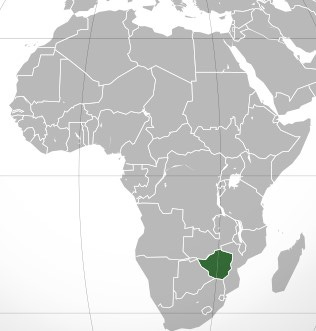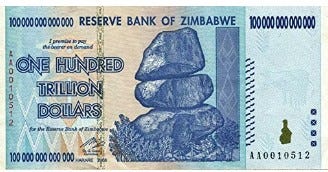MONTANA — Greetings from the Big Sky Country.
Click on the audio player above to listen to the podcast or read the transcript below. Hope you enjoy.
I’ve got a question for you.
Where is Zimbabwe?
I’m serious.
If I were to hand you a blank outline map of the world, would you be able to point to the country of Zimbabwe?
Pointing in the general direction of a continent is not the correct answer.
If you’re like me, you might know that Zimbabwe is in Africa, but if you’re like me you couldn’t point to exactly where in Africa it is located.
Here’s a description of the location from Britannica:
Zimbabwe “… shares a 125-mile (200-kilometre) border on the south with the Republic of South Africa and is bounded on the southwest and west by Botswana, on the north by Zambia, and on the northeast and east by Mozambique.”
Does that help or do you have difficulty knowing where those other countries are located?
For me, I knew where South Africa was and had a good idea where Mozambique was, but I had no idea where Botswana or Zambia were located.
Here’s an outline map of Africa with Zimbabwe highlighted.
I hope your geographical knowledge is better than mine but this episode of the Big Sky Writer is not about geography.
It’s about the economy.
Why don’t you know more about Zimbabwe?
Most of us are probably aware that our country is going through some difficult economic times and the immediate future doesn’t look promising.
Okay, what is coming to our economy looks terrible.
And, trust me on this, it’s not Putin’s fault.
We have destroyed ourselves.
You would think that with inflation already here and threatening to get worse, America’s news organizations would cover how other countries have handled similar challenges … in the present and in the past.
Perhaps we could learn what works and what doesn’t.
But how often do you hear about what happened in Germany in the 1930’s or what is happening in Zimbabwe or Venezuela in the present?
I’m guessing not very often.
The Zimbabwean Dollar
So it’s time for a very short history lesson on the Zimbabwean dollar.
The first Zimbabwean dollar (ZWD) was introduced in 1980 and was worth a little more than the US dollar … $1.47 to be exact.
But Zimbabwe had a number of social, political, and economic problems — does that sound like any country you know today? — and Zimbabwean dollar (ZWD) began to lose purchasing power.
The government of Zimbabwe dealt with the problem by printing more Zimbabwean dollars.
Does that sound like any country you know today?
What happened after that?
In Zimbabwe in 1983, one US dollar would get you one ZWD.
But by 2006, one US dollar would get you 500,000 ZWDs.
That’s called inflation.
Time for a change
Things got so bad, they decided to scrap their ZWD and come up with a new currency, the ZWN.
In 2006, people could exchange 1,000 ZWDs and get 1 ZWN.
In August of 2006, one US dollar would get you 650 ZWNs. Not as good as the original ZWD but it was respectable.
However, only two years later one US dollar would get you 1,000,000,000 ZWNs.
In other words, it was worthless.
So the government went back to work, scrapped the ZWN and replaced it with a new currency — the ZWR.
If you had 10 billion ZWNs lying around the house, you could exchange them for one ZWR.
But the new currency didn’t last long either and the government came out with yet another new currency — the ZWL.
If you had one trillion ZWR’s hidden under the mattress, you could exchange them for one ZWL.
NOTE: The 100 Trillion Dollar (ZWN) note has no purchasing value but collectors like it and it will cost you a couple of hundred US dollars to purchase it on Amazon.
Time for more changes
Things were so bad the government even stopped printing money and told their people to use the currency of other countries. The US Dollar was the most popular with the South African Rand being another common choice.
What did all this mean?
It can be summed up with the “I” word — inflation.
In January of 2008, the inflation rate in Zimbabwe was 100,000%. Think about that for a minute. If you bought a hamburger for $5, the next time you bought it, it would cost $5,000.
Four months later, the inflation rate was 1,000,000%. That $5 hamburger would now cost $50,000.
Only two months later, the inflation rate had risen to 250,000,000%. The $5 hamburger would now cost you $12,500,000.
The Government Solution
And things continued to get worse, so the government outlawed inflation. They set price controls.
Does that sound like any country you know today?
Takeaway
I could go on quite awhile describing the history of and current situation in Zimbabwe but if you want to know more check out “Hyperinflation in Zimbabwe.”
The next time you hear the government or the Fed or a politician wants to spend a trillion dollars to “fix” something, consider what it’s really going to cost you.
There are plenty of examples in the past and the present to see the results of such actions.
Here are some stories you might find interesting.
“Not a Dry Eye at the Wedding as Paralyzed ALS Mother Defies All Odds to Dance With Her Son” from Epoch Times.
“Biden education head defends biological boys in girls sports, not telling parents about trans kids” by Madeleine Hubbard.
“Top Medical Group Scrubs Discredited Information Used To Push Late-Term Abortion” by Patrick Hauf.
Before I go I’d like to share a blessing with you from the Old Testament.
“May the Lord bless and protect you; may the Lord’s face radiate with joy because of you; may he be gracious to you, show you his favor, and give you his peace.”
Numbers 6:24-26 (The Living Bible)
Until next time … be the reason someone smiles today!
Clint
RESOURCES















